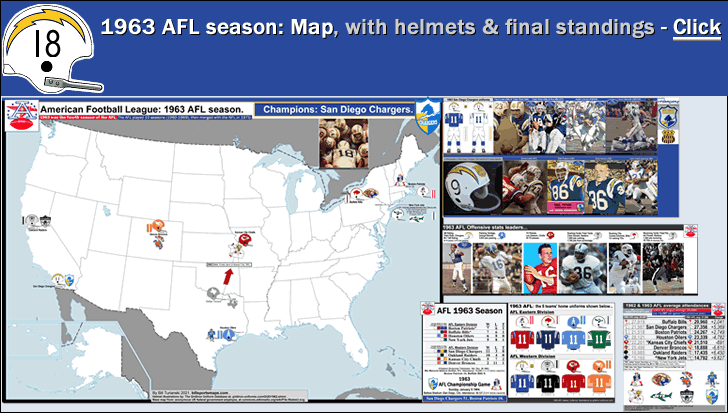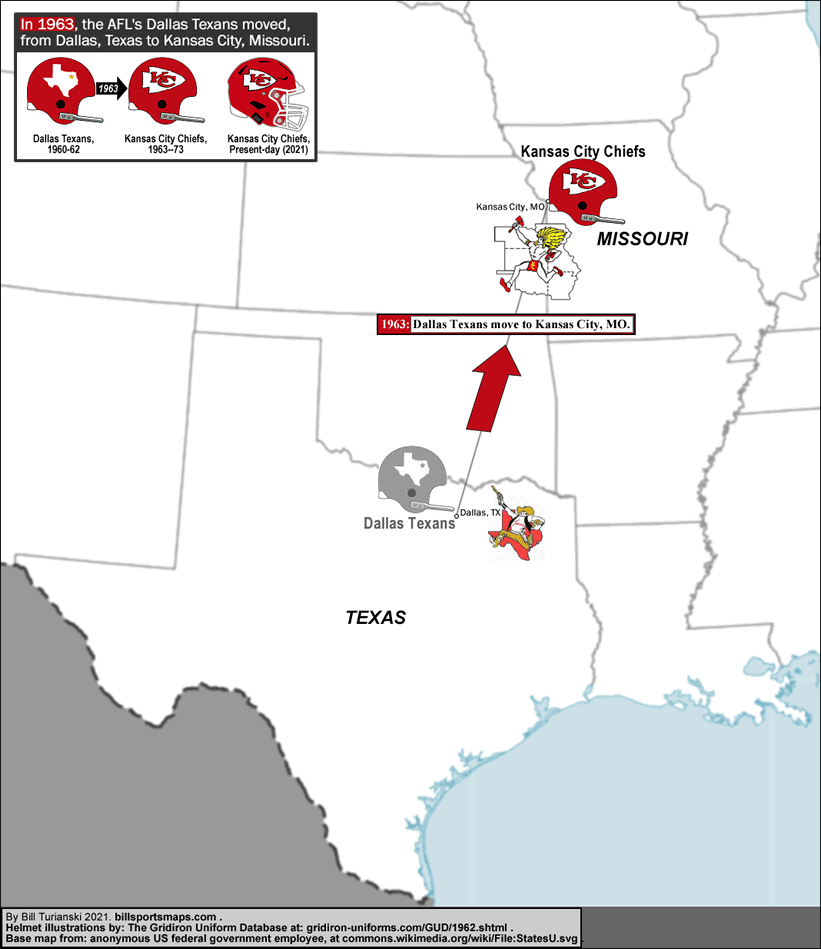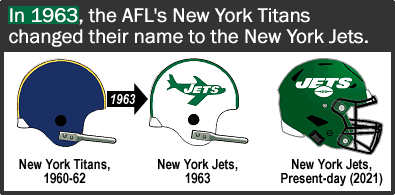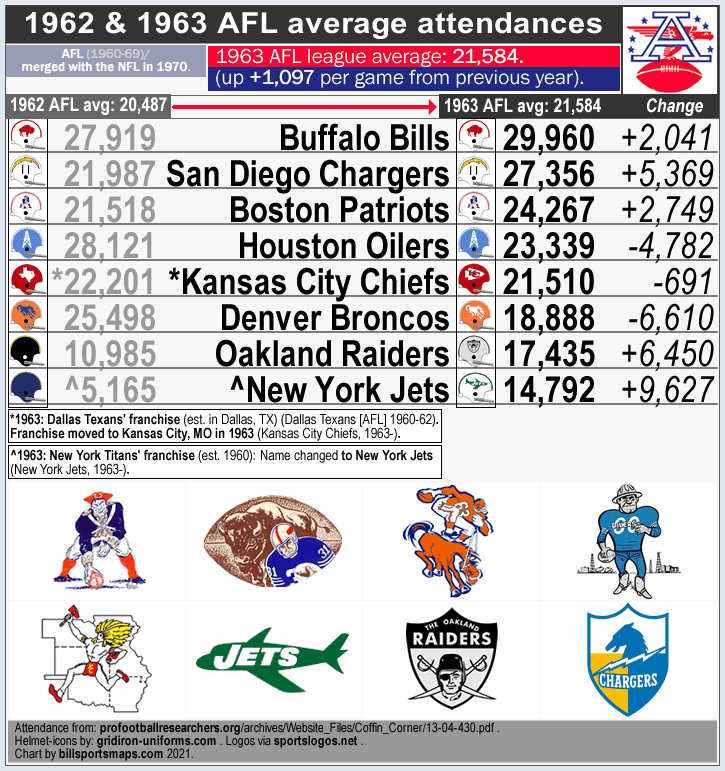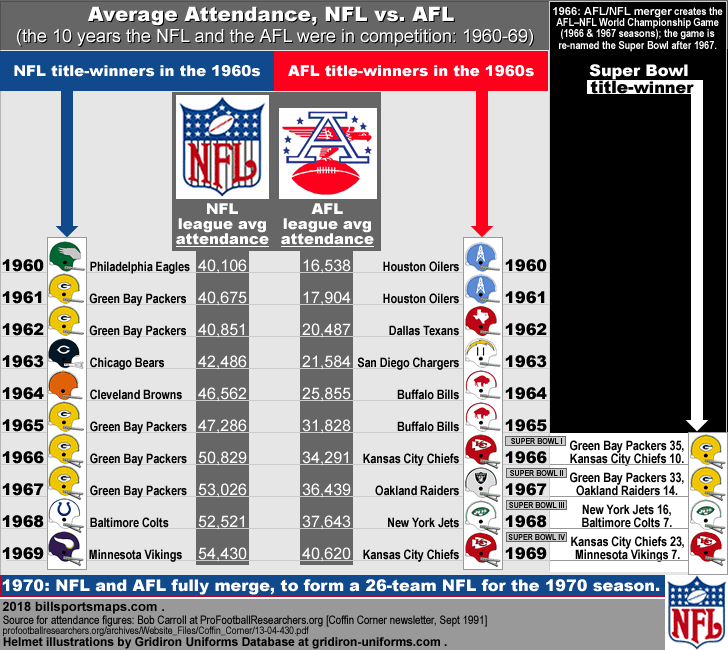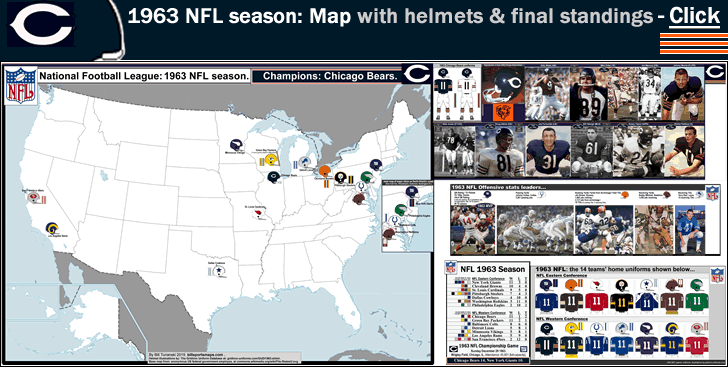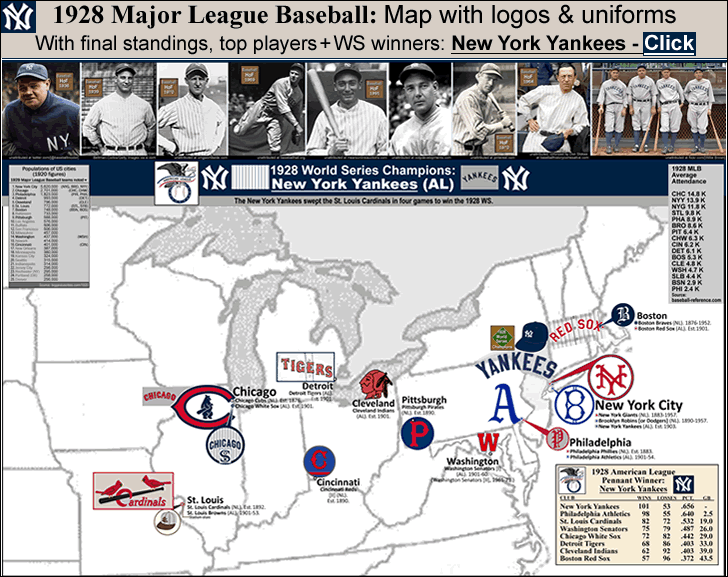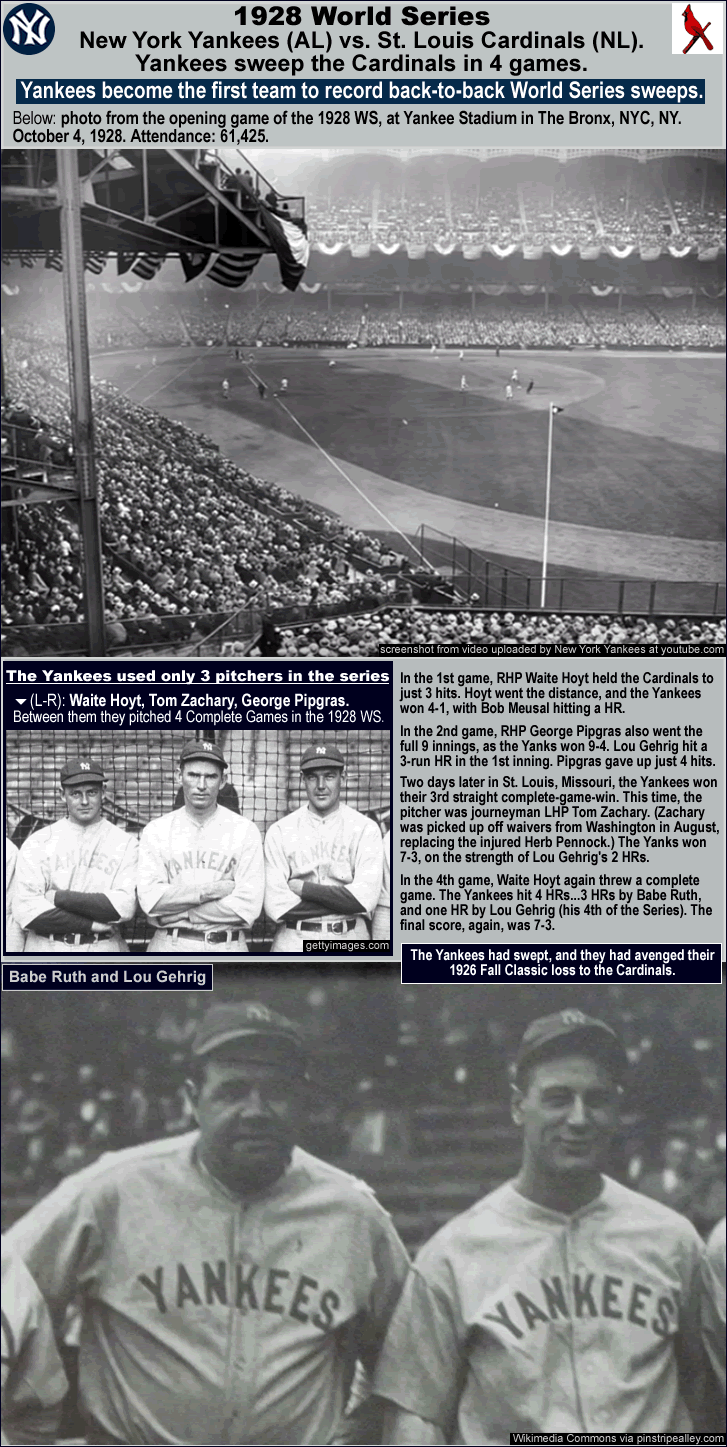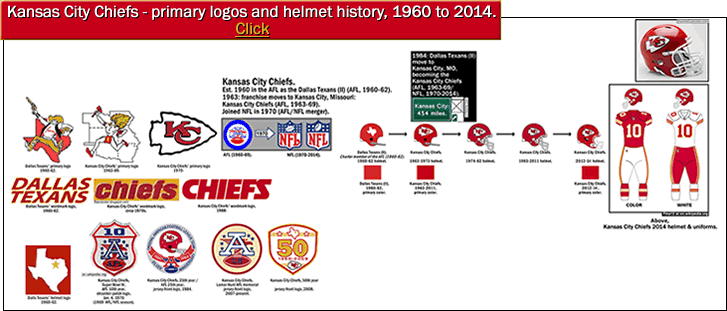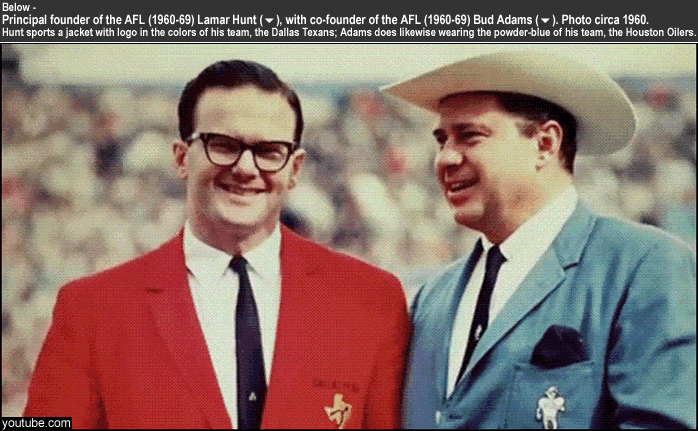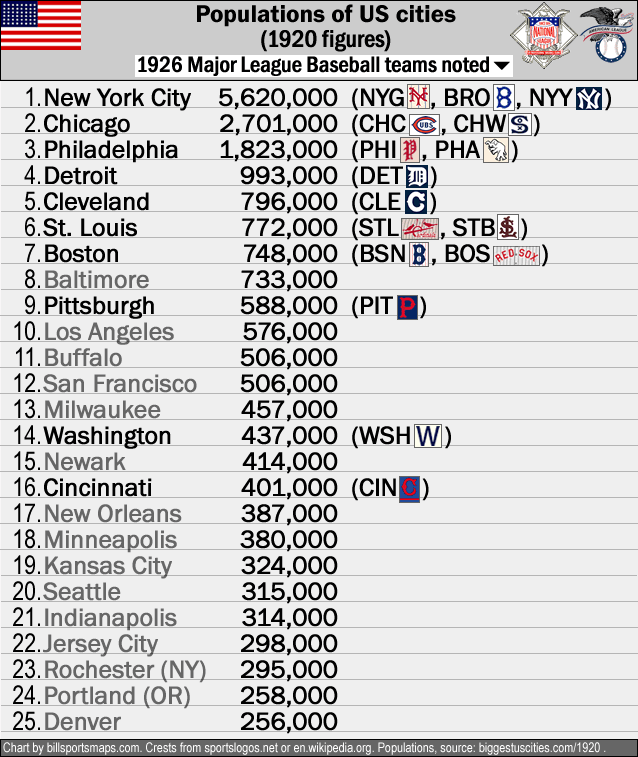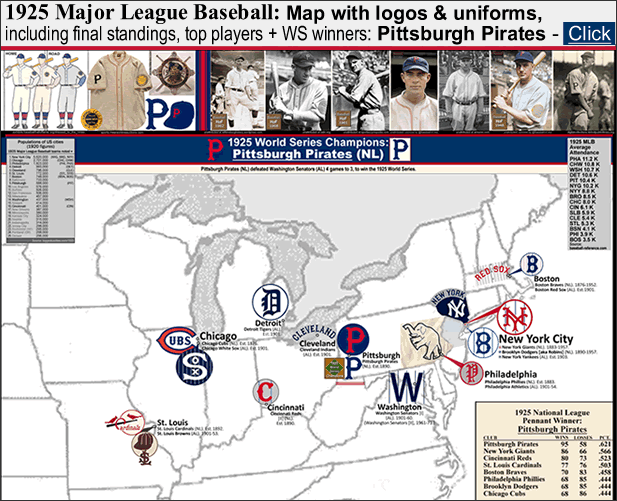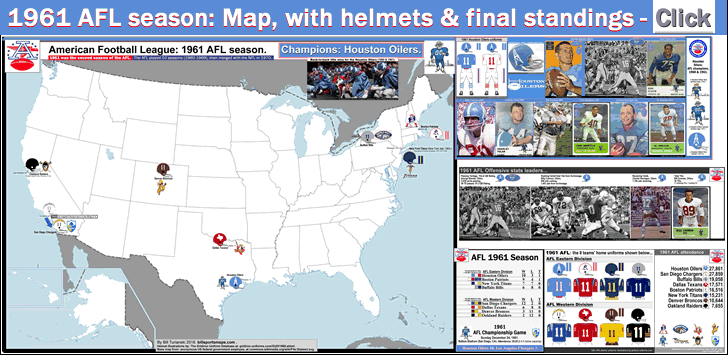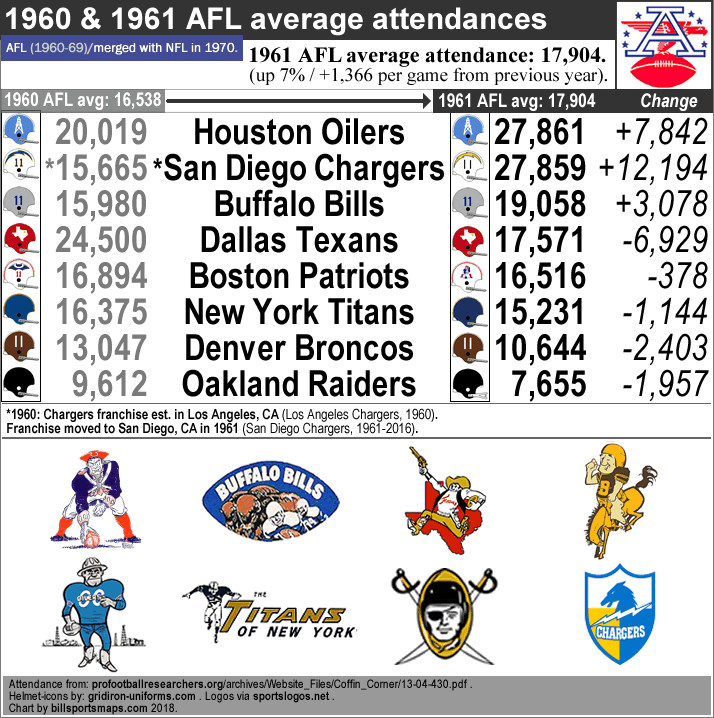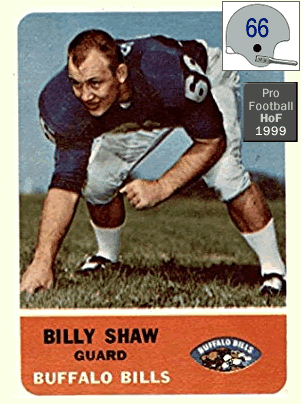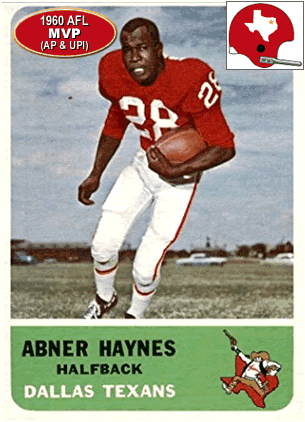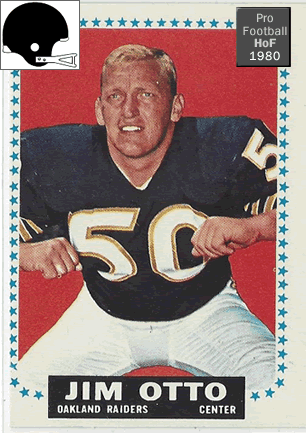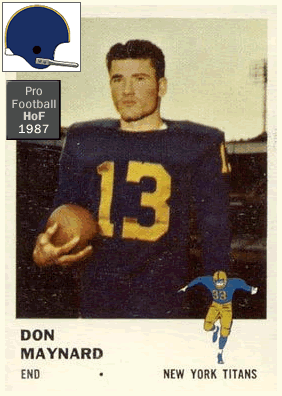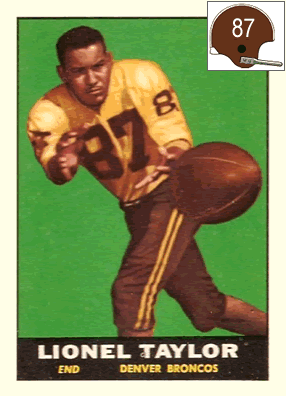
England (incl. Wales): Historic Counties location-map of 1920-21 Football League (66 clubs); Champions: Burnley FC
…
…
By Bill Turianski on the 3rd of August 2020; twitter.com/billsportsmaps.
The map shows the Football League in 1920-21, when the first First Division champions were Burnley FC (their first English title), and when the Third Division was introduced.
Table of Contents:
Part 1). Description of Map page.
Part 2). A synopsis of Burnley’s title-winning season of 1920-21.
Part 3). History of Football League expansion from 1888 to 1921: A section which includes a timeline of the Football League’s first 29 seasons [1888-1921], the creation of the Third Division in 1920-21, and then creation of the two Third Divisions (North and South) in 1921-22.
Part 4). Notes on the First Division attendance in the early years, and the impact of adding two 3rd division leagues by 1921-22 (with bar graph of League attendance 1890-1950).
Part 5). Top Flight teams of 1920-21… Where are those clubs now, 100 years later..?
Part 6). Historic County boundaries of England (pre-1975), compared to the modern County boundaries.
…
Part 1: The map shows the Football League of 1920-21, when the Third Division was introduced, and when Burnley FC were the champions of England.
The main map, including a separate London-area map, shows all 66 clubs in the Football League (22 First Division clubs, 22 Second Division clubs, 22 Third Division clubs).
The First Division clubs are shown with their home kits, arranged by region in separate boxes, flanking each side of the main map.
They are arranged in 7 regional sections.
Here is a list of those seven regional sections, including names on each club’s home ground (and years they played there)…
1920-21 First Division: clubs by Historic Counties
Lancaster [including the cities of Manchester and Liverpool]: (9 First Division clubs)
∙ Blackburn Rovers: played at (and still play at) Ewood Park (1881; and since 1890).
∙ Bolton Wanderers: played at Burnden Park (from 1895 to 1997).
∙ Burnley: played at (and still play at) Turf Moor (since 1883).
∙ Everton: played at (and still play at) Goodison Park (since 1892).
∙ Liverpool: played at (and still play at) Anfield (since 1892).
∙ Manchester City: played at Hyde Road (1887-1923).
∙ Manchester United: played at (and still play at) Old Trafford (since 1910).
∙ Oldham Athletic AFC: played at (and still play at) Boundary Park (since 1904).
∙ Preston North End: played at (and still play at) Deepdale (since 1878).
Yorkshire [the 3 Ridings of Yorkshire]: (5 First Division clubs)
∙ Bradford City: played at (and still play at) Valley Parade (since 1903).
∙ Bradford Park Avenue: played at Park Avenue (from 1907 to 1973).
∙ Huddersfield Town AFC: played at Leeds Road (from 1908 to 1994).
∙ Middesbrough: played at Ayresome Park (from 1903 to 1995).
∙ Sheffield United: played at (and still play at) Bramall Lane (since 1889).
Northeast [Northumberland and Durham]: (2 First Division clubs)
∙ Newcastle United: played at (and still play at) St James’ Park (since 1892).
∙ Sunderland AFC: played at Roker Park (from 1898 to 1987).
Birmingham area: [Warwikshire/Worcestershire/Staffordshire]: (2 First Division clubs)
∙ Aston Villa: played at (and still play at) Villa Park (since 1897).
∙ West Bromwich Albion: played at (and still play at) the Hawthorns (since 1900).
Derbyshire: (1 First Division club)
∙ Derby County: played at the Baseball Ground (from 1895 to 1997).
London area [County of London and Middlesex]: (3 First Division clubs)
∙ Arsenal: played at Highbury (from 1913 to 2006).
∙ Chelsea: played at (and still play at) Stamford Bridge (since 1905).
∙ Tottenham Hotspur: played at White Hart Lane (from 1899 to 2017).
Next to the 22 1st division clubs’ home kits are each club’s current (2020) badge. The 22 First Division clubs also have home-jersey segments next to their location-dots on the map. The 22 Second Division clubs have slightly smaller home-jersey segments next to their location-dots on the map. And the 22 Third Division clubs have even smaller home-jersey segments next to their location-dots on the map. The source of the illustrated kits and jersey-segments is the excellent site Historical Football Kits (historicalkits.co.uk).
Note on the location-dots…a black dot shows the location of the club’s home ground in 1920-21; grey dots show future grounds the club would go on to play in. Listed next to each location-dot is the date that the club played at each of their grounds (in tiny 10-point type).
The main map and the London area map both show the borders of the Historic Counties (pre-1975). {See Part 6, a section on Historic Counties, further below.} Any Historic County in England (or Wales) which had a Football League club in 1920-21 is shown on the map(s) with a tinted overlay.
At the top-centre of the map page is a section devoted to the 1921 title-winners, Burnley FC of Lancashire {see more on this in Part 2, below}. Below that, in the centre of the map-page, is a section devoted to the 5 top scorers in the First Division in 1920-21.
At the right-hand side of the map page are the tables for the 3 divisions of the 1920-21 Football League. Next to each club is their 1920-21 home-jersey segment, and the club’s current (2020) badge. If the club in 1920-21 wore a badge on their jersey, that is also shown (but very few clubs wore badges on their jerseys back then). The tables include the usual (Wins, Draws, Losses, Points) plus Goal Average. (Goal Average was Goals Scored divided by Goals Conceded. It was used as a tiebreaker from 1888 to 1976. It was replaced by Goal Difference in 1976-77. The problem with goal average was that it encouraged lower scoring games, as this page at Wikipedia shows, Goal Difference v. Goal Average.) At the far right-hand side of the 1920-21 Football League tables are each club’s home league average attendance.
Finally, at the lower left-hand side of the map page, next to the map’s Legend, is a list of the 30 largest cities in England in 1921. {Source: List of towns and cities in England by historical population (en.wikipedia.org).} The 14 largest cities in England in 1921 are shown on the map…London, Birmingham, Liverpool, Manchester, Sheffield, Leeds, Bristol, Bradford, Hull, Newcastle, Nottingham, Portsmouth, Stoke-on-Trent, Leicester.
…
…
Part 2: The 1920-21 season, when Burnley FC, of Burnley, Lancashire, were the football champions of England.
Most successful clubs and top-drawing clubs circa 1920…
1920-21 was the 29th season of the Football League, and the second season back after World War I. Aston Villa was the most successful English club to that point in time, with 6 titles. Aston Villa had last won the title in 1910 (six seasons earlier). The second-most successful club was Sunderland, with 5 titles. Sunderland had last won the title in 1912 (four seasons earlier).
The best drawing clubs circa 1920 were Newcastle United and Chelsea {year-by-year attendance, here}. Both Newcastle and Chelsea were drawing at or near 40 thousand per game. In 1920-21, there was phenomenal and record-breaking attendance through all three divisions. The 1st division overall average attendance in 1920-21 would not be surpassed for another 26 years (not until 1946-47). The 1st division as a whole averaged an astounding 29.2 K per game. The 2nd tier drew also drew very well, with an average crowd of 16.7 K. And the new 3rd tier, comprised almost entirely of formerly non-League sides all from the south of England (and of Wales), drew an impressive 10.6 K per game. The following season of 1921-22 would see another 3rd division added, this time comprised of formerly non-League sides all from the north of England (and Wales). {For more on that, see Part 3, below, which includes a timeline of Football League expansion from 1888 to 1921.} {More on attendance in part 4, further below.}
In 1920-21, Burnley, a founding member of the Football League in 1888, were playing in their 15th season in the First Division, and were in their 4th consecutive top flight season. (Burnley had won promotion back to the First Division in 1913). Burnley’s Manager John Haworth was starting his 11th season at the helm. John Haworth had previously led Burnley to promotion in 1913, and to the FA Cup title in 1914.
As mentioned, the 1920-21 season was the second season back, after four Football League seasons were cancelled, due to the Great War [World War I]. The previous season of 1919-20 saw Burnley finish in 2nd place, 9 points behind the title-winners, West Bromwich Albion.
Burnley got off to a terrible start in 1920-21, losing their first 3 matches (losing at home to Bradford City, then losing away to Huddersfield Town, then losing away to Bradford City). So Manager John Haworth made several changes to the squad, including the reinstatement of both Goalkeeper Jerry Dawson and Defender/Captain Tommy Boyle. Then on the 6th of September 1920, Burnley beat Huddersfield 3–0, at home at Turf Moor; the goalscorers were Bob Kelly, Tommy Boyle, and Billy Nesbitt.
At that point in early September 1920, Burnley began an unbeaten run that would extend to a then-record 30 games. Burnley’s 30-game-unbeaten-run included 21 wins, and zero dropped points at Turf Moor. Burnley’s unbeaten run was an English first division record for 83 years, until it was bettered by Arsenal in 2003–04 (Arsenal’s unbeaten run went beyond a full season, to 49 games).
Burnley reached first place on 20 November 1920, with a 2-2 draw at Oldham. Burnley remained leaders for the rest of the season. The Clarets’ unbeaten run went all through October, November, December, January, and February. At Christmas time, Burnley led the league by 3 points. On 15 February, Burnley beat Blackburn 3-1 at Turf Moor, in front of a team season-high home attendance of 41,500. (Burnley drew an average of 31,535 to Turf Moor in 1920-21, which was a little over 2,000 more per game than the league average of 29,252.) {1920-21 First Division attendance figures can be seen at European-Football-Statistics.co.uk; also on the map page, at the far right hand side are average attendance figures for all 3 League divisions, and all 66 League teams.}
Burnley’s 30-game unbeaten run ended in late March, and it ended only when Burnley had to (ridiculously) play two games in two days. Burnley finally lost a match on 26 March, to title-challengers Manchester City, 3-0 away – which was just one day after they had beaten Manchester United 1-0 at Turf Moor. At that point, Burnley were 7 points clear at the top of the table. Burnley then beat Man United away and Man City at home, and the title was just one good result away. But then, mirroring their early season problems, Burnley finished the season winless in their last 6 games. But they had built up enough of a lead that a 1-1 draw, away to Everton, on the 23rd of April, clinched the title for them, with 3 games to spare.
The key players in Burnley’s title-winning season of 1920-21 were Goalkeeper Jerry Dawson, Forward Joe Anderson, Forward Bob Kelly and Captain/Defender Tommy Boyle. The Renfrewshire, Scotland-born Joe Anderson had 25 goals in league games that season (6th-best in the league). Bob Kelly, born near Wigan in Lancashire, scored a league-10th-best 20 goals that season. Tommy Boyle, who was born near Barnsley in Yorkshire, had previously captained two teams to the FA Cup title: Barnsley in 1912 and Burnley in 1914. As mentioned earlier, Boyle had started the season on the bench, but manager Haworth put him back in the squad on the same game that started their 30-game unbeaten run. Tommy Boyle led all Burnley defenders with 7 goals in 1920-21. {Joe Anderson, Bob Kelly, Tommy Boyle and Jerry Dawson can be seen in photos on the map page, in the Burnley section at the top-center; there is also a photo of Secretary/Manager John Haworth, an aerial shot of Turf Moor from the late 1920s, two team photos, and a banner from the Burnley matchday programme of 2 April 1921.}
…
Part 3: In 1920-21, the Football League expanded from 44 teams to 66 teams, with the addition of a Third Division.
Before that is discussed, here is a timeline of the Football League, from its creation in 1888-89, up to 1920-21…
{Note: all seasons listed below are linked to their pages at en.wikipedia.org (click on the date).}
1888-89: 12 teams… the Football League is established with 12 clubs from the Midlands and the North of England…Accrington FC [defunct], Aston Villa, Blackburn Rovers, Bolton Wanderers, Burnley, Derby County, Everton, Notts County, Preston North End, Stoke FC [present-day Stoke City], West Bromwich Albion, Wolverhampton Wanderers. {See this: One letter, two meetings and 12 teams – the birth of league football (by Paul Fletcher at bbc.com/sport/football from Feb. 2013).}
1890-91: 14 teams…in its 4th season, the League expands by two teams, to 14 teams.
1892-93: 28 teams…in its 5th season, the Football League expands to a second division and is now comprised of 28 teams (with the First Division now comprising 16 teams). Some of the arriving clubs in the new 12-team Second Division come into the League from the failed rival-league the Football Alliance (1889-92). Promotion and relegation is to be decided by test matches between the bottom 3 finishers in D-1 and the top three finishers in D-2. Also, the bottom four finishers in D-2 must pass re-election by League members, or be demoted out of the League (later changed to bottom 3 finishers).
1893-94: 31 teams…in its 6th season, the Football League expands by 3 teams to 31 teams, with the addition of 3 more teams to the now-15-team Second Division.
1894-95: 32 teams…in its 7th season, the Football League expands by one team to 32 teams, with the addition of another team to the now-16-team Second Division.
1898-99: 36 teams…in its 11th season, the Football League expands by 4 teams to 36 teams, with the addition of 2 teams to each division, making D-1 and D-2 both 18-team leagues. ALSO, Promotion-and-Relegation replaces Test Matches…now, the bottom 2 finishers in D-1 would be relegated down to D-2, while the top 2 finishers in D-2 would be promoted up to D-1 (and the bottom 3 finishers in D-2 still had to pass re-election to stay in the League).
1905-06: 40 teams…in its 18th season, the Football League expands by 4 teams to 40 teams, with the addition of 2 teams to each division, making D-1 and D-2 both 20-team leagues. ALSO, clubs from the South of England enter the League for the first time: the first two southern-England-based clubs to join the League were Chelsea, and Clapton Orient [present-day Leyton Orient].
1915: football is suspended in England following the outbreak of the Great War [WW I]. Four seasons of the Football League are lost (1915-16 to 1918-19).
1919-20: 44 teams…with the return of football in England, the Football League expands by 4 teams to 44 teams, with the addition of 2 teams to each division, making D-1 and D-2 both 22-team leagues.
1920-21: 66 teams…in its 20th season, the Football League expands by 22 teams to 66 teams, with the creation of a Third Division. ALSO, clubs from Wales enter the League for the first time: four clubs, all from South Wales, join the League (Cardiff City into the Second Division; Swansea Town [Swansea City], Newport County, and Merthyr Town into the Third Division).
1920-21 was the second season that the Football League was back in play, following World War I. This was when the League expanded once again – into a third division. In 1920-21, that new 3rd tier was comprised of teams almost exclusively from the heretofore-under-represented South of England (and Wales)…all but one were located south of Birmingham (see next few sentences). 23 of the 24 of the clubs in the new 1920-21 Third Division were teams which had been, previously, in the [non-League] 1919-20 Southern League Division One {league table, here}. The only club from the 1919-20 Southern League Division One that did not join the new Football League Third Division was Cardiff City, who were elected straight into the Football League Second Division. And to make room for that, the last-place finisher of the 1919-20 Football League Second Division was relegated into the new 3rd division. That club was Grimsby Town. Why did Cardiff City, Wales’ biggest football club (then and now), receive such special treatment (ie, an immediate promotion)?… ‘As Cardiff City was long considered a potential entrant for the Second Division due to their FA Cup exploits and Southern League dominance, they were sent directly into the Second Division’…{excerpt from en.wikipedia.org/Football_League_Third_Division}. Some might say that was simply blatant favoritism, and I don’t disagree. However, it must be pointed out that the 1920-21 Cardiff City squad was a strong enough team to finish in second place in their debut season in the League (and thus win promotion to the 1921-22 First Division). So Cardiff City went from non-League football, to the top flight, in one season (and were the last team to ever do so).
The 66-teams set-up in the Football League lasted exactly one season (1920-21).
One year later (1921-22), the new south-ward imbalance of the lower part of the Football League was corrected, when another Third Division in the Football League was established. Since there was no northern equivalent to the Southern League, this new 1921-22 Third Division North was comprised of teams from the most prominent of the non-League leagues in the Midlands and the North. Those leagues which supplied teams into the new Football League Third Division North in 1921-22 were: the Midland League, the Central League, the North Eastern League, the Lancashire Combination, and the Birmingham Combination.
So, in 1921-22, there was the newly-established Third Division North and there was the newly-established Third Division South (each with 22 teams, and each being parallel 3rd divisions). That made it 88 teams in the Football League. This 88-team Football League set-up, including two equal 3rd tier leagues, existed for twenty one seasons (1921-22 to 1949-50). Then, in 1950-51, the whole Football League set-up expanded slightly more, to 92 teams. So, in 1950-51 there were: 22 teams in the 1st Division, 22 teams in the 2nd Division, 24 teams in the 3rd Division North and 24 teams in the 3rd Division South. (That number of teams – 92 – still stands today, in concept, if not legal framework.) Then, in 1957-58, the two regional 3rd divisions were eliminated, with the creation of a new national Third Division and a new national Fourth Division. This set-up existed all through the 1960s and the 1970s and the 1980s, and only changed when the Premier League ‘evolved’ from the old First Division, in 1992-93. The now-20-team 1st division…aka the Premier League…might be a separate legal entity from the Football League, but it is still the top tier of the English football league system. And the Football League’s three tiers still sit below that. So, in England (including Wales), there are still 92 teams in the four leagues above the vast non-League Pyramid.
…
Part 4: Notes on the First Division attendance in the early years, and the impact of adding two 3rd division leagues by 1921-22.
As mentioned in part 2, 1920-21 was the 29th season of the Football League. The Football League had grown remarkably, with crowds now nearing a 30-thousand-per-game average in the top tier. And the Football League had grown from a single 12-team league to a three-tier 66-team set-up. It had fought off an early rival league – the Football Alliance: The Football Alliance existed from 1889-92, with its 12 members merging into the Football League in 1892, joining the newly formed Second Division of the Football League.
England: Football League Average Attendance, 1988-89 to 1949-50 – League averages, by Division…
Click on image below for full-size chart
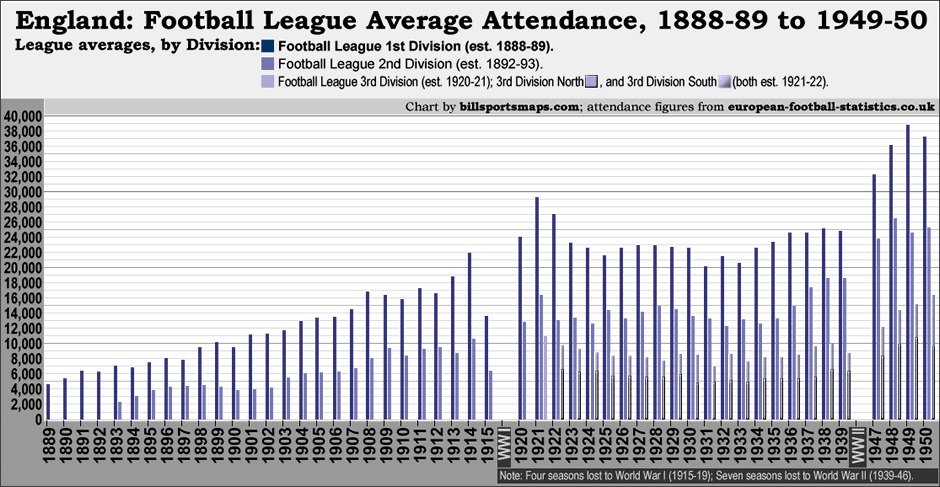
Graph by billsportsmaps.com; attendance figures from european-football-statistics.co.uk.
The first season of 1888-89 saw crowds averaging only 4,600 per game. {Year-by-year English League-average attendance figures from european-football-statistics.co.uk, here.} Growth was slow at first. 5 years on, in 1892-93 (when the Football Alliance clubs came over to augment the new Second Division), attendance was at 7,000 per game in the 1st tier, and 2,200 in the new 2nd tier. The creation of a second division did not seem to negatively affect top flight crowds, though, of course, if the League had not created the Second Division, attendances might have increased. But then again, another rival-league like the Alliance might have threatened the League, so you could say expansion to the Second Division was inevitable. (One could also make the same argument for the League’s expansion into the two 3rd divisions.)
It took eleven seasons for the First Division to reach 10-K-per-game, in 1898-99 (with the Second Division drawing 4.2-K per game). And even then, the next season of 1900 saw a slight decrease in crowd size (of 0.5-K-per-game). It took 19 seasons for the 1st division to make an attendance increase of 2,000-per-game…that happened in 1906-07, when average crowds increased by 2.1-K-per-game: from 13.4-K in 1906, to 15.5-K in 1907.
Twenty-thousand per game was finally reached in the 1913-14 season, and that season also saw the 2nd division draw 10-K per-game for the first time. The outbreak of World War I was in June 1914, and the next season of the Football League in 1914-15 saw a drop in attendance as the war loomed. Then there were the 4 seasons lost to World War I. The first season after the war – 1919-20 – saw a large increase in average crowd size: 24.0-K in the 1st tier and 12.8-K in the 2nd tier. Those are very solid numbers. And in 1920-21, attendance continued to skyrocket, to a phenomenal 29,200 per game. And an impressive 16.3-K per game in the 2nd tier. And a remarkable 10.8-K per game in the new Third Division. Ten thousand per game in the new 3rd division! That’s how starved for League football fans in the south of England were (because 21 of the 22 teams in the new 3rd division in 1920-21 were southern clubs).
It bears mentioning that the 29.2-K-per-game attendance that the 1st division drew in 1920-21 was not surpassed for 26 years. It wasn’t until 1946-47, the first season back after World War II, that there was better attendance in the top flight than in 1920-21 (20 seasons). (In 1946-47, the 1st division averaged a then-record 32.2-K, then two seasons later in 1948-49 the 1st division reached its all-time record attendance of 38.7-K per game. Which has almost, but not quite, been bested by the Premier League in 2019-19 and in 2019-20. Again, see attendances by year, here.)
Why did the 1st division’s overall attendance drop after 1920-21, and why did top flight attendance continue to plateau all through the rest of the 1920s and all of the 1930s? Well, the global Depression of the 1930s certainly contributed to flat attendance in that decade, but what about in the 1922-to-’29 time period? That is to say, when the economy was fine, and the League had just experienced its two best-drawing seasons.
I would say it was because of the introduction of the second, parallel 3rd division in 1921-22. Because that added 22 Northern-or-Midlands-based clubs into the League, and many of the people attending matches of those new 3rd-Division-North League clubs would have been going to other northern-based Football League matches in previous seasons. By the same token, there is a reason why the season of 1920-21 saw considerable attendance increase despite the creation of the new 3rd tier. It was because all those new League clubs in the new 3rd tier in 1920-21 were southern-based clubs (except for Grimsby Town). And the 1st division had just 3 southern-based clubs back then in 1920-21 (Spurs, Arsenal, Chelsea), and the 2nd division had only four clubs located in the south back then (Cardiff City [of Wales], Bristol City, Clapton [Leyton] Orient, Fulham).
So in 1920-21, in the south of England (and Wales), there was a vast untapped market for League football – even 3rd division League football. But in the following season (1921-22), when the Football League created a parallel 3rd division comprised entirely of northern-based clubs, there was a much smaller market for 3rd division League football up north. Because there were so many big League clubs already up there in the North and in the Midlands. The Football League football market was pretty saturated up there (and it still is today, especially around Greater Manchester, Merseyside, and Lancashire).
Want more proof that the over-saturation of League football in the North hurt attendance figures? Well, in all of the 28 seasons that the dual-North/South-3rd-division set-up existed (from 1921 to ’57), the Third Division North never had higher attendance than the Third Division South. It was never even close: never in any of those 28 seasons was the 3rd-North’s overall attendance within 2.0-K-per-game of the 3rd-South’s. Again, see the chart above (and click on it for an enlarged image) or see the E-F-S site’s England page {here}.
After 1921-22, for nearly two decades, 1st division football attendance did not increase. There was no 1st division crowd-size increase for 18 consecutive seasons, from 1921-22 to 1938-39.
…
…
Part 5: Notes on the Top Flight teams of 1920-21… Where are those clubs now, 100 years later..?
Each of the 22 top flight teams of 1920-21 are below shown in order of finish, with the following information…
# in 1920-21. Club. 100 years later…2019-20 league finish (#in league pyramid). Seasons played in 1st division (consecutive seasons in 1st div/or: last time in 1st div). English titles (last). FA Cup titles (last). Average attendance*
*Average attendance is for 2019-20 from domestic home league matches played up to 15 March 2019; post-March 15 closed-door (ie, zero attendance) matches discounted from attendance average.
(Note: for all the clubs listed below, Top flight seasons & Consecutive seasons includes the season starting in September 2020 [2020-21].)
(Note: there have been 122 seasons of English 1st Division/Premier League, including 2020-21.)
1920-21 First Division
∙1st place in 1920-21: Burnley FC.
100 years later…2019-20: 10th place in Premier League (#10 in league pyramid). 58 seasons in 1st division (5 consecutive top flight seasons). 2 English titles (last in 1960); 1 FA Cup title (1914). 20,260 avg attendance in 2019-20 (30th best attendance in English football in 2019-20).
∙2nd place: Manchester City FC.
100 years later…2019-20: 2nd place in Premier League (#2 in league pyramid). 92 seasons the in 1st division (19 consecutive top flight seasons). 6 English titles (last in 2019); 6 FA Cup titles (last in 2019). 54,219 avg attendance in 2019-20 (5th best).
∙3rd place: Bolton Wanderers FC.
100 years later…2019-20: 23rd place (last place) in League One (3rd division) (#67 in league pyramid)/relegated to 4th division. 73 seasons in the 1st division (relegated out in 2012). 4 FA Cup titles (1958). 11,480 avg attendance in 2019-20 (46th best).
∙4th place: Liverpool FC.
100 years later…2019-20: 1st place in Premier League (#1 in league pyramid) (English champions). 106 seasons in the 1st division (59 consecutive top flight seasons). 19 English titles [2nd-best All-time] (2020). 7 FA Cup titles (2006). 53,143 avg attendance in 2019-20 (6th best).
∙5th place: Newcastle United FC.
100 years later…13th place in Premier League (#13 in league pyramid). 89 seasons in the 1st division (4 consecutive top flight seasons). 4 English titles (1927). 6 FA Cup titles (1955). 48,248 avg attendance in 2019-20 (7th best).
∙6th place: Tottenham Hotspur FC. (Note: Tottenham won the 1921 FA Cup title, beating Wolverhampton 1–0.)
100 years later…2019-20: 6th place in Premier League (#6 in league pyramid). 86 seasons in the 1st division (43 consecutive top flight seasons). 2 English titles (1961). 8 FA Cup titles (1991). 59,384 avg attendance in 2019-20 (4th best).
∙7th place: Everton FC.
100 years later…2019-20: 12th place in Premier League (#12 in league pyramid). 118 seasons in the 1st division [All-time English record] (67 consecutive top flight seasons). 9 English titles (1987). 5 FA Cup titles (1995). 39,150 avg attendance in 2019-20 (10th best).
∙8th place: Middlesbrough FC.
100 years later…2019-20: 17th place in EFL Championship (2nd division) (#37 in league pyramid). 62 seasons in the 1st division (relegated out in 2017). 19,933 avg attendance in 2019-20 (31st best).
∙9th place: Arsenal FC.
100 years later…2019-20: 8th place in Premier League (#8 in league pyramid). 104 seasons in the 1st division last in 2017 (96 consecutive top flight seasons [All-time English record]). 13 English titles [3rd-best All-time] (2004). 14 FA Cup titles [All-time English record] (2020). 60,279 avg attendance in 2019-20 (2nd best).
∙10th place: Aston Villa FC.
100 years later…2019-20: 17th place in Premier League (#17 in league pyramid). 107 seasons in the 1st division [2nd-best All-time] (2 consecutive top flight seasons). 7 English titles (1981). 7 FA Cup titles (1957). 41,661 avg attendance in 2019-20 (8th best).
∙11th place: Blackburn Rovers FC.
100 years later…2019-20: 11th place in EFL Championship (2nd division) (#31 in league pyramid). 72 seasons in the 1st division (relegated out in 2012). 3 English titles (1995). 6 FA Cup titles (1928). 13,873 avg attendance in 2019-20 (40th best).
∙12th place: Sunderland AFC.
100 years later…2019-20: 8th place in EFL League One (3rd division) (#52 in league pyramid). 86 seasons in the 1st division (relegated out in 2017). 6 English titles (1936). 2 FA Cup titles (1973). 19,933 avg attendance in 2019-20 (31st best).
∙13th place: Manchester United FC.
100 years later…2019-20: 4th place in Premier League (#4 in league pyramid). 96 seasons in the 1st division (46 consecutive top flight seasons). 20 English titles [All-time English record] (2013). 12 FA Cup titles [2nd-best All-time] (2016). 73,393 avg attendance in 2019-20 (Best attendance in England).
∙14th place: West Bromwich Albion FC.
100 years later…2019-20: 2nd place in EFL Championship (2nd division) (#22 in league pyramid)/promoted automatically to Premier League for 2020-21. 81 seasons in the 1st division (had been relegated out in 2019/promoted back in 2020). 1 English title (1920). 5 FA Cup titles (1968). 24,053 avg attendance in 2019-20 (22nd best).
∙15th place: Bradford City AFC.
100 years later…2019-20: 9th place in EFL League Two (4th division) (#76 in league pyramid). 12 seasons in the 1st division (relegated out in 2001). 1 FA Cup title (1911). 14,309 avg attendance in 2019-20 (38th best).
∙16th place:Preston North End FC.
100 years later…2019-20: 9th place in EFL Championship (2nd division) (#29 in league pyramid). 46 seasons in the 1st division (relegated out in 1961). 2 English titles (1890). 2 FA Cup titles (1938). 13,579 avg attendance in 2019-20 (43rd best).
∙17th place: Huddersfield Town AFC.
100 years later…18th place in EFL Championship (2nd division) (#38 in league pyramid). 33 seasons in the 1st division (relegated out in 2019). 3 English titles (1926). 1 FA Cup title (1922). 21,748 avg attendance in 2019-20 (27th best).
∙18th place: Chelsea FC.
100 years later…3rd place in Premier League (#3 in league pyramid). 86 seasons in the 1st division (32 consecutive top flight seasons). 6 English titles (2017). 8 FA Cup titles (2018). 40,453 avg attendance in 2019-20 (9th best).
∙19th place: Oldham Athletic AFC.
100 years later…2019-20: 19th place in EFL League Two (4th division) (#86 in league pyramid). 12 seasons in the 1st division (relegated out in 1994). 3,466 avg attendance in 2019-20 (85th best).
∙20th place: Sheffield United FC.
100 years later…9th place in Premier League (#9 in league pyramid). 62 seasons in the 1st division (2 consecutive top flight seasons). 1 English title (1898). 4 FA Cup titles (1925). 30,869 avg attendance in 2019-20 (14th best).
∙21st place: Derby County FC (relegated to the 2nd division for 1921-22).
100 years later…10th place in EFL Championship in 2019-20 (#30 in league pyramid). 65 seasons in the 1st division (relegated out in 2008). 2 English titles (1975). 1 FA Cup title (1946). 26,727 avg attendance in 2019-20 (20th best).
∙22nd place: Bradford Park Avenue FC (relegated to the 2nd division for 1921-22).
100 years later…22nd place [last place] in National League-North (6th level)/would have been relegated to the 7th level but were reprieved due to Coronavirus pandemic rendering all English leagues below the 6th level to be null & void for 2019-20 [ie, relegations below 6th level were cancelled] (~#137 in league pyramid). 3 seasons in the 1st division (relegated out in 1921). 484 avg attendance in 2019-20 (180th best in English football).
+1920-21 Second Division promoted clubs:
∙1st place in Second Division in 1920-21: Birmingham FC/promoted to First Division for 1921-22. (Note: the name Birmingham City FC was adopted in 1943).
100 years later…20th place in EFL Championship in 2019-20 (#40 in league pyramid). 57 seasons in the 1st division (relegated out in 2011). 20,412 avg attendance in 2019-20 (29th best).
∙2nd place in Second Division in 1920-21: Cardiff City FC/promoted to First Division for 1921-22 [becoming the first Welsh club to play in the English 1st division].
100 years later…5th place in EFL Championship in 2019-20/lost in play-offs semifinals (#25 in league pyramid). 17 seasons in the 1st division (relegated out in 2019). 1 FA Cup title (1927 [the only Welsh club to win an FA Cup title]). 22,822 avg attendance in 2019-20 (25th best).
…
Part 6: Historic Counties of England before the late 20th century boundary-changes…
Note: this interactive map was very helpful in making my 1920-21 map here, and I imagine many of you would enjoy looking through it…Wikishire.co.uk/interactive map of Historic Counties of the British Isles .
Basically, everything, County-wise, was much more convoluted back then. ‘Back then’ generally meaning before 1975, but with London, before 1965…and specifically meaning before the changes made in April 1974 which were the result of The Local Government Act of 1972. That Act of Parliament led to the creation of such things as Greater Manchester and the West Midlands (both of which were officially instituted in April 1974). Before this, the outlying areas of England’s three biggest cities – London, Birmingham, and Manchester – were split among different County jurisdictions. As were the outlying areas around Liverpool, and also Newcastle.
One might ask why were the Historic Counties were done away with circa 1972-74? The answer is that they were changed to streamline administrative purposes. For example, imagine today having all of sprawling urban London under six different local government jurisdictions (County of London/Essex/Kent/Surrey/Middlesex/Hertfordshire). Or having all of urban Birmingham being under three separate jurisdictions (Warwickshire/Staffordshire/Worcestershire). In the major cities of Great Britain, the County borders had been established long before the patterns of urban development had become apparent. The changes made between 1965 and 1975 were aimed at combining the urban areas into single jurisdictions. ‘The Local Government Act 1972 sought generally to unite conurbations within a single county, while retaining the historic county boundaries as far as was practicable.’ {-excerpt from Historic counties of England/1965 and 1974 (en.wikipedia.org).
But to many people, eradicating the Historic Counties has left them rootless. -Britons Feeling Rootless After Changes to England’s Historic Counties (by Simon Worrall from November 2014 at nationalgeographic.com.
You could say that the Historic Counties in Britain functioned in the same way as the states in the United States of America. Each – in both cases – have unique characteristics, and each give residents there an identity. Imagine the uproar if two small American states like Connecticut and Rhode Island were merged. Or if New Jersey was abolished and diced up to better suit the local governments of New York City and Philadelphia. Or if north-western Indiana was grafted onto Illinois, to make the city of Chicago’s government more streamlined. No way those things would go down well. However, in Britain they did do things like that.
Introduction of the 6 Metropolitan Counties…
The changes made in county borders from 1965 through 1974 saw the introduction of a separate category of County: the Metropolitan county. There are 6 Metropolitan counties…Greater London, Greater Manchester, the West Midlands (ie, greater Birmingham including Wolverhampton and Coventry), Tyne and Wear (greater Newcastle including Sunderland, as well as Gateshead and South Shields), Merseyside (greater Liverpool including St Helens and the Wirral Peninsula, as well as Southport), West Yorkshire (greater Leeds including Bradford, Huddersfield, and Halifax), and South Yorkshire (greater Sheffield including Barnsley, Rotherham, and Doncaster). {Here is a small chart showing the Metropolitan counties that were created in April 1974 (en.wikipedia.org).}
London (Greater London)…
Back before 1966, there was the County of London (1889-1965), but that was much smaller than the sprawling present-day Greater London. All of East London, for example, was still part of Essex (including where West Ham once played and now play, and where Leyton Orient still play).
And much of West London and North London was actually not ‘in London’, but was part of Middlesex (including where both Spurs and Brentford once played and where both now play). The County Middlesex does not officially exist anymore, but there are many who still keep the concept alive – just one example being the ‘County of Middlesex’ signs still standing in Brentford and Enfield.
Before 1966, a large section of South West London was still part of Surrey (including where Crystal Palace still play). Also, a large section of South East London was still part of Kent (such as where Charlton Athletic once played and still play).
Birmingham, and the introduction of the West Midlands…
Before 1975, the region surrounding Birmingham was part of three different counties. Pre-1975, most of Birmingham was in Warwickshire, but north-east parts of the already-sprawling greater Birmingham were in a narrow northeastern-pointing arm of Worcestershire. And the western part of the greater Birmingham region…from West Bromwich on towards Wolverhampton and the Black Country…that was all part of Staffordshire. The West Midlands did not exist before April 1974 – there was just the vague concept of the Midlands. The Midlands was well established culturally, as a distinct region of England, but before 1975 the Midlands was not established in any jurisdictional form. Warwickshire lost a great deal of territory after 1974: Warwickshire lost not only the city of Birmingham, but Warwickshire also lost the area just east of that (Sutton Coldfield, Solihull, and the city of Coventry). The Historic county of Warwickshire had a generally circular-shape, but now Warwickshire is an odd oblong-crescent shape. So, before the sweeping changes of April 1974, Aston Villa were situated in Warwickshire, while just 3 miles west of Villa Park there is West Bromwich Albion’s home ground of the Hawthorns. But the Hawthorns was situated in Staffordshire before 1975.
Other former Counties (like Middlesex)…
Back then, there were also some other counties (like Middlesex) that do not exist anymore – like Huntingdonshire, which was just south of Peterborough, and which eventually became part of Cambridgeshire. And there were two Counties that no longer exist up in the Northwest of England: Westmorland and Cumberland. These two former counties now comprise most of present-day Cumbria (including most of the the Lake District, and the city of Carlisle up near the Scottish border).
Lancashire (which back then included the cities of Liverpool and Manchester), and Cheshire…
A southern section of present-day Cumbria originally belonged to Lancashire – Lancashire had a significant detached enclave on the Furness Peninsula, on the north shore of Morecambe Bay, around Barrow-in-Furness (home of Barrow AFC). Before 1975, Lancashire was a great deal larger…the city of Manchester and the city of Liverpool were both part of Lancashire back then. But also, some parts of both cities’ outer areas were not ever in Lancashire and were actually part of Cheshire. Specifically: Warrington and Widnes were in Cheshire before 1975, and are now part of Merseyside; and Stockport, Altrincham, Hyde, Dukinfield, and Stalybridge were in Cheshire before, and are now part of Greater Manchester. Lancashire lost about two-fifths (40%) of its land after 1974 – around 700 square-miles. There is one section that Lancashire gained after 1974: some sparsely-populated area just north of Blackburn and Burnley, and just south-west of the Yorkshire Dales.
Manchester…
The Metropolitan county of Greater Manchester did not exist before April 1974. Manchester United, Manchester City, Bolton Wanderers, and Wigan Athletic (as well as Oldham and Rochdale) all played in, and still play in, areas that were once part of Lancashire. You can see a stubborn vestige of Lancashire-identification in Bolton Wanderers’ recent crest-change. Because their badge once again includes a Red Rose of Lancashire, despite the fact that the town of Bolton, and where the Wanderers now play (in Horwich, 6 miles west of Bolton) are both part of Greater Manchester.
Liverpool…
Liverpool was part of Lancashire before 1975; now Liverpool is part of the Metropolitan county of Merseyside. And Merseyside – that is to say Greater Liverpool including the Wirral Peninsula – that jurisdiction did not exist before 1975. The Wirral, where Tranmere Rovers play [in Birkenhead], was part of Cheshire back then. Merseyside stretches up the Lancashire coast a bit as well, to Southport.
Newcastle…
Up in the Northeast, back before April 1974, the Metropolitan county of Tyne and Wear did not exist. Newcastle was part of Northumberland. And Sunderland was part of County Durham, along with other parts of urban north-east Durham (Gateshead and South Shields). Without Newcastle, Northumberland (the northern-most county in England), is now one of the least-populated counties.
Yorkshire (the largest Historic county)…
The Historic County of Yorkshire was once, over a thousand years ago, a part of the Viking kingdom of Jórvík (Danish York, from 867 to 954). The Historic County of Yorkshire was one vast county that was subdivided into 3 Ridings, plus an obscure section west of the city of York called the Ainsty of York. (Riding is an Old Norse term – Threthingr – which means: one-third part of a thing.) Two of the three old Ridings of Yorkshire correspond – generally – with the modern-day (post-1974) counties. The North Riding of Yorkshire morphed into North Yorkshire, which is now a large mushroom-shaped county (with the city of York in the mushroom-shape’s stem). Also generally unchanged is the East Riding of Yorkshire (which includes Hull, there on the north shore of the Humber Estuary). But the West Riding of Yorkshire changed quite a bit after 1974…the West Riding of Yorkshire, after 1974, was basically divided into two. Now there is West Yorkshire, which has the city of Leeds, and just west of that, the city of Bradford, as well as Huddersfield and Halifax towards the west, and then to the border at the Pennine Chain. (The Penninnes are the low mountain range that has traditionally separated Yorkshire from Lancashire and Northwest England.) And now there is South Yorkshire, which was also created in April 1974, and which is where Sheffield, as well as Barnsley, Rotherham, and Doncaster, are located. As mentioned at the top of this section, the counties of West Yorkshire and South Yorkshire are two of the 6 counties that are designated as Metropolitan counties.
With the term ‘Yorkshire’, one can perhaps best see how, in some ways, the old Historic county set-up never really went away. I say this because people from there will usually simply describe themselves as ‘from Yorkshire’, not differentiating which of the four modern-day Yorkshire counties they are actually from.
___
Thanks to all at the following links…
Sources:
Football League…
-English Football League (en.wikipedia.org).
-A complete history of the Football League, of which Derby County were a founder member (dcfc.co.uk).
-1920-21 Football League (en.wikipedia.org).
-The 1920-21 English Football League First Division…Table Standings; Top 10 Goal Scorers (melaman2.com). [Note: only source I could find for Top Scorers in 1920-21.]
-Historical Kits.co.uk…English_Football_League [kits, by club, through the years].
-European Football Statistics.co.uk…[Attendance] {To access, click on England; click on 1920-21.}
-File:England location map.svg (en.wikipedia.org).
-Map of the Thames River Basin District (gre.ac.uk).
Historic Counties of England (and Wales)…
-Historic Counties of England (en.wikipedia.org).
-Wikishire.co.uk/map…https://wikishire.co.uk/map/#/centre=52.917,-4.500/zoom=7 [interactive map] (wikishire.co.uk/map).
-County of London [1889-1965] [Before the much larger Greater London was instituted in 1965, there was the County of London (1889-1965).] (en.wikipedia.org).
-Know Your London.wordpress.com…London – The Counties (knowyourlondon.wordpress.com from Sept. 2017).
-Middlesex County Press.com…But Where Exactly is it Again? (middlesexcountypress.com).
-File:Middlesex 1851 and 1911.png [Boundaries of former County of Middlesex.] (commons.wikimedia.org).
-Historic Surrey [With map showing parts of the County of Surrey lost & gained after 1965.] (exploringsurreyspast.org.uk).
-Gloucestershire…File:Gloucestershire_1832_Map [Shows Bristol as part of Gloucestershire.] (en.wikipedia.org/[History of Gloucestershire]).
-File:Yorkshire_Wapentakes.svg [Ainsty of York, a region of the Historic County of Yorkshire which was a separate jurisdiction from the Three Ridings of Yorkshire.] (wikishire.co.uk).
-1911 map of the County of Berkshire [Shows Berkshire when it was a larger County, and before it included Slough.](upload.wikimedia.org).
-Historic Counties of Wales (en.wikipedia.org).
Blank maps…
-File:English metropolitan and non-metropolitan counties 2010.svg (en.wikipedia.org).
-File:Greater London UK relief location map.jpg (en.wikipedia.org).
[Note: I erased the present-day County boundaries for the main map, drawing in Historical County boundaries {see links above}; I used both the present-day Greater London boundary and the present-day London Borough boundaries as an under-layer backdrop for the London map.]
Populations of cities…
List of towns and cities in England by historical population (en.wikipedia.org).
…
Photo and image credits on map page…
Burnley section:
Aerial photo of Turf Moor (1929) by unknown photographer for Burnley Express via en.wikipedia.org. 1920-21 Burnley FC official programme banner [April 1921], from clarets-mad.co.uk. Team photo of Burnley FC (1922) [1922 Chums trading card], via doingthe92.com/["Chums" football teams (1922)]. Joe Armstrong [1921], unattributed at vintagefootballers.com. John Haworth, from burnleyfootballclub.com. Burnley FC team photo (1921), unattributed at clarets-mad.co.uk. Burnley 1920-21 kit, illustration by historicalkits.co.uk. Jerry Dawson [1922 Sport and Adventure Famous Footballers trading card], from doingthe92.com.
Tommy Boyle [Captain], (1922 Gem trading card) from doingthe92.com/[The Gem Library "Special Real Photo" (1922)]. Bob Kelly (1922 trading card by DC Thomson), from doingthe92.com/[DC Thomson "British Team of Footballers" (1922)]. Joe Armstrong [1921], unattributed at vintagefootballers.com.
…
Section for Top scorers in 1920-21 First Division:
Data: The 1920-21 English Football League First Division…Table Standings; Top 10 Goal Scorers (melaman2.com). [Note: this was the only source I could find for an actual list of the Top Scorers in 1920-21.]
Joe Smith (Bolton), unattributed at twitter.com/[@MemorabiliaMal. Tommy Browell (Man City), 1922 Gem trading card from doingthe92.com/[The Gem Library "Special Real Photo" (1922)]. Charlie Buchan (Sunderland), colorized photo unattributed at Sunderland message board site at readytogo.net. Billy Walker (Aston Villa), 1923 trading card from doingthe92.com/[The Gem Library "Autographed Action Series" (1923)]. George Elliott (Middlesbrough), 1914 colorized photo from an unattributed trading card at vintagefootballers.com.
…
Base maps:
both are by Nilfanion…
-File:English metropolitan and non-metropolitan counties 2010.svg (en.wikipedia.org).
-File:Greater London UK relief location map.jpg (en.wikipedia.org).
…
-Illustrations of Kits:
Historical Kits.co.uk – English_Football_League [kits, by club, through the years].
-1920-21 Football League attendance figures from european-football-statistics.co.uk/[1921 England Attendance].
…
Legend for Map & the Banner at foot of map:
-Compass rose from de.123rf.com.
-Banner Segments from these sources: The Scroll [from cover of 1920-21 FA Cup Final programme] via co.pinterest.com; Text and the old-style Ball image are from 10footballs.com/the-programmes-192122-2/.
